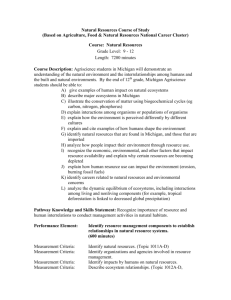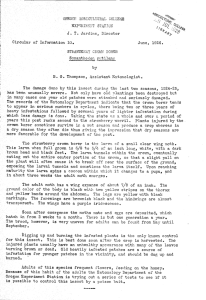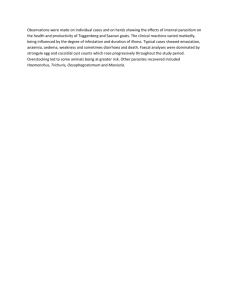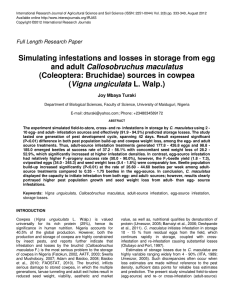Insect pest infestation on mangrove forests of Kenya: identification, threats
advertisement
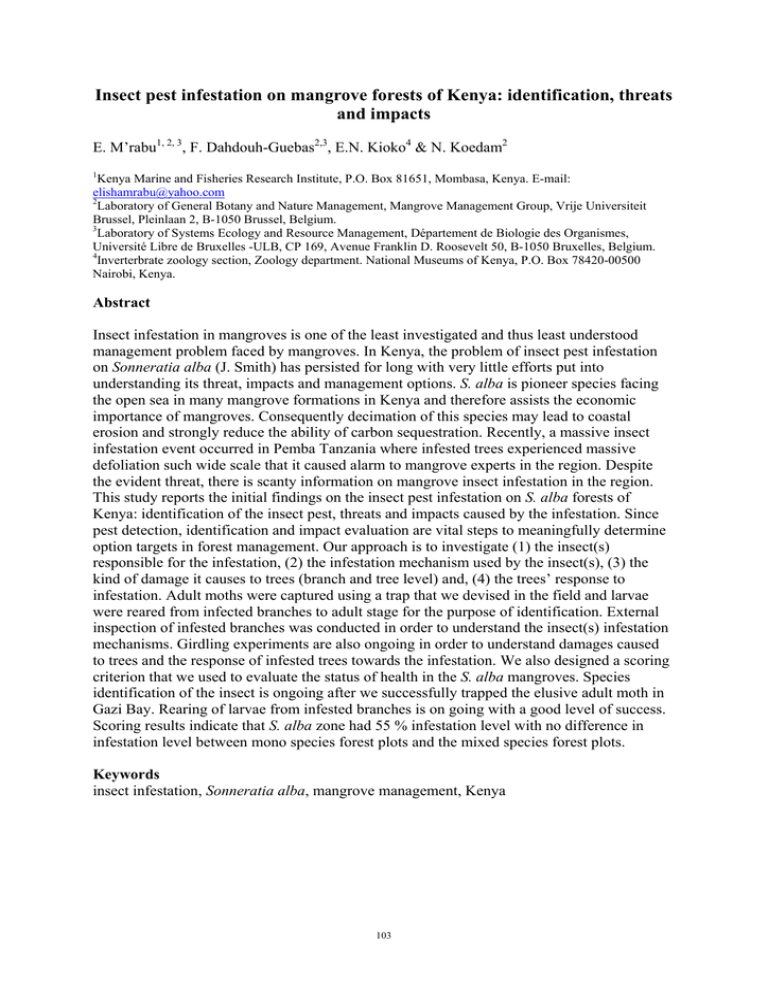
Insect pest infestation on mangrove forests of Kenya: identification, threats and impacts E. M’rabu1, 2, 3, F. Dahdouh-Guebas2,3, E.N. Kioko4 & N. Koedam2 1 Kenya Marine and Fisheries Research Institute, P.O. Box 81651, Mombasa, Kenya. E-mail: elishamrabu@yahoo.com 2 Laboratory of General Botany and Nature Management, Mangrove Management Group, Vrije Universiteit Brussel, Pleinlaan 2, B-1050 Brussel, Belgium. 3 Laboratory of Systems Ecology and Resource Management, Département de Biologie des Organismes, Université Libre de Bruxelles -ULB, CP 169, Avenue Franklin D. Roosevelt 50, B-1050 Bruxelles, Belgium. 4 Inverterbrate zoology section, Zoology department. National Museums of Kenya, P.O. Box 78420-00500 Nairobi, Kenya. Abstract Insect infestation in mangroves is one of the least investigated and thus least understood management problem faced by mangroves. In Kenya, the problem of insect pest infestation on Sonneratia alba (J. Smith) has persisted for long with very little efforts put into understanding its threat, impacts and management options. S. alba is pioneer species facing the open sea in many mangrove formations in Kenya and therefore assists the economic importance of mangroves. Consequently decimation of this species may lead to coastal erosion and strongly reduce the ability of carbon sequestration. Recently, a massive insect infestation event occurred in Pemba Tanzania where infested trees experienced massive defoliation such wide scale that it caused alarm to mangrove experts in the region. Despite the evident threat, there is scanty information on mangrove insect infestation in the region. This study reports the initial findings on the insect pest infestation on S. alba forests of Kenya: identification of the insect pest, threats and impacts caused by the infestation. Since pest detection, identification and impact evaluation are vital steps to meaningfully determine option targets in forest management. Our approach is to investigate (1) the insect(s) responsible for the infestation, (2) the infestation mechanism used by the insect(s), (3) the kind of damage it causes to trees (branch and tree level) and, (4) the trees’ response to infestation. Adult moths were captured using a trap that we devised in the field and larvae were reared from infected branches to adult stage for the purpose of identification. External inspection of infested branches was conducted in order to understand the insect(s) infestation mechanisms. Girdling experiments are also ongoing in order to understand damages caused to trees and the response of infested trees towards the infestation. We also designed a scoring criterion that we used to evaluate the status of health in the S. alba mangroves. Species identification of the insect is ongoing after we successfully trapped the elusive adult moth in Gazi Bay. Rearing of larvae from infested branches is on going with a good level of success. Scoring results indicate that S. alba zone had 55 % infestation level with no difference in infestation level between mono species forest plots and the mixed species forest plots. Keywords insect infestation, Sonneratia alba, mangrove management, Kenya 103
